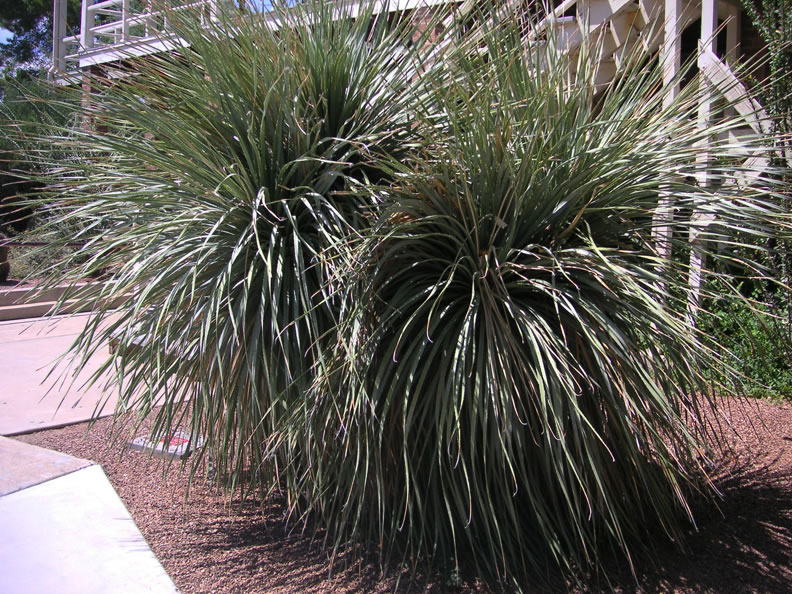Desert Challenges: Alternating drought and monsoon rains.
Plant Adaptations: Fibrous shallow root system.
Desert Ecology:
This perennial evergreen consists of a rosette of hundreds of long, narrow, blue-green leaves armed with small, sharp, marginal teeth. The base is usually feet across and stemless. Old specimens may develop trunks up to 6 feet tall. Individuals produce only male or only female flowers on each plant (dioecious). The inflorescence contains thousands of tiny white flowers which produce winged fruits. This stalk of flowers emerges from the center of the rosette in early summer and grows to 12 feet (3.7 m) tall. Unlike agaves which usually die after flowering, the stem branches at the base of the inflorescence and continues growing.
Ethnobotany:
The stalks and seeds were traditionally eaten roasted. The buds of flowers were also eaten. The pressed juice was used to make an alcoholic drink. Its primary traditional use is for weaving textiles with the fibers. It has also been used to make baskets, brooms, sandals, mats and occasionally for thatched roofs for huts.


